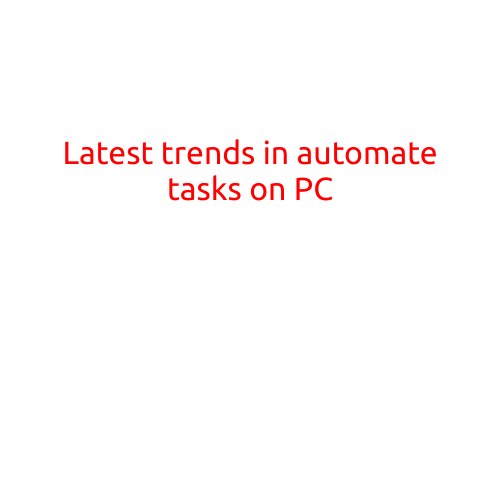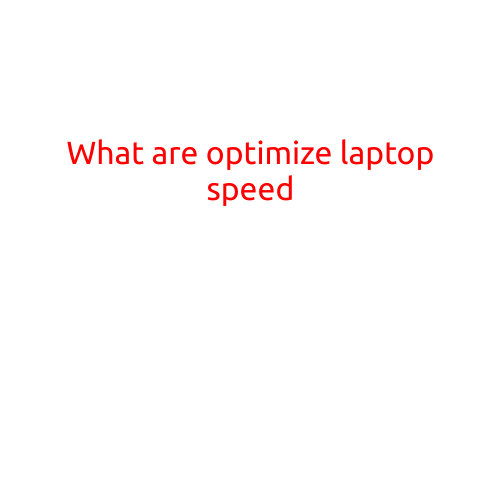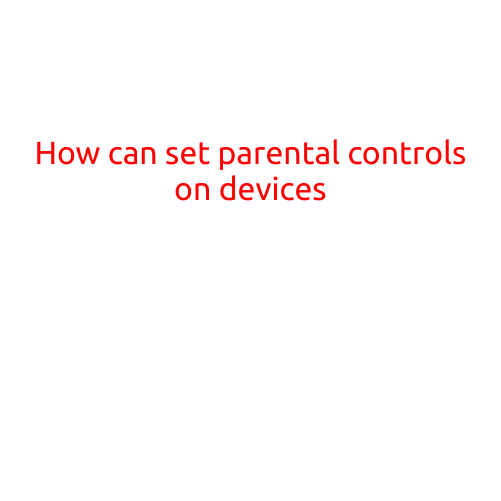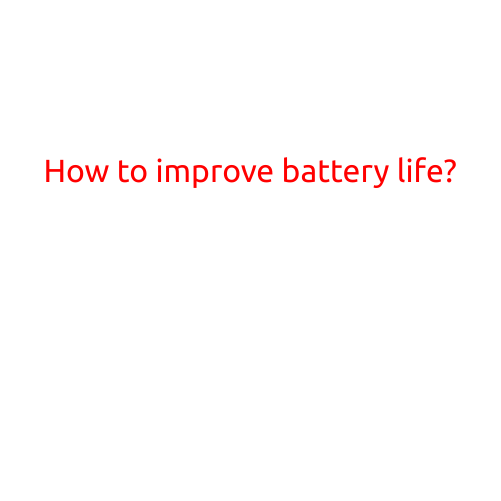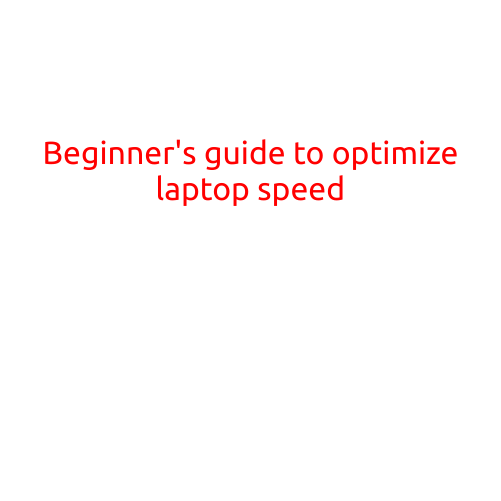
Beginner’s Guide to Optimize Laptop Speed
Are you tired of your laptop slowing down and feeling like it’s struggling to keep up with your tasks? Optimizing your laptop’s speed can make a huge difference in your productivity and overall user experience. In this article, we’ll provide you with a step-by-step guide on how to optimize your laptop speed and get the most out of your device.
Clean Up Your Laptop
The first step to optimizing your laptop speed is to clean up your laptop from dust, dirt, and other debris that can slow it down. Here’s what you need to do:
- Turn off your laptop and unplug it from the power source.
- Use compressed air to blow out any dust or debris from the vents, keyboard, and crevices.
- Use a soft cloth to wipe down the laptop’s exterior and interior, paying special attention to the keyboard and touchscreen.
- Use a disinfectant wipe to clean any sticky keys or other areas that might be harboring germs.
Update Your Operating System and Software
Outdated operating systems and software can slow down your laptop, so it’s essential to keep them up-to-date. Here’s how to do it:
- Check for updates for your operating system by going to Settings>Update & Security>Windows Update (for Windows laptops) or System Preferences>Software Update (for Mac laptops).
- Install any available updates to ensure your laptop has the latest features and security patches.
- Check for updates for your software, including web browsers, productivity apps, and games. Update them as needed.
- Consider reinstalling software that may be outdated or corrupted.
Disable Unnecessary Startup Programs
Some programs may be running in the background and consuming system resources without your knowledge. Here’s how to disable them:
- Press the Windows key + R to open the Run dialog box, type “msconfig,” and press Enter.
- In the Startup tab, scroll down and disable any programs that you don’t need to run at startup. Click OK to save your changes.
- For Mac laptops, go to System Preferences>Users & Groups> Login Items and disable any programs that you don’t need to run at startup.
Close Unnecessary Background Apps
Some apps may be running in the background and consuming system resources without your knowledge. Here’s how to close them:
- Press the Ctrl + Shift + Esc keys to open the Task Manager.
- Click on the “Processes” tab and sort the processes by “CPU” or “Memory” to see which ones are consuming the most resources.
- Close any apps that you don’t need to run in the background. You can do this by right-clicking on the app and selecting “End Task” or by clicking on the “End Task” button.
Use the Task Manager to End Task
The Task Manager can also help you identify and end task-hungry applications. Here’s how to use it:
- Press the Ctrl + Shift + Esc keys to open the Task Manager.
- Click on the “Performance” tab to see a graph of your laptop’s CPU usage.
- Click on the “Processes” tab to see a list of running applications.
- Right-click on an app and select “End Task” to close it.
Add More RAM
If your laptop has limited memory (RAM), it may slow down over time. Here’s how to add more RAM:
- Check your laptop’s specifications to see if it has a RAM upgrade option.
- If it does, purchase additional RAM from a reputable supplier.
- Follow the manufacturer’s instructions to install the new RAM.
Disable Animations
Animations can consume system resources and slow down your laptop. Here’s how to disable them:
- Press the Windows key + R to open the Run dialog box, type “systempropertiesadvanced,” and press Enter.
- Click on the “Settings” tab and uncheck the box next to “Animate windows and taskbars.”
- Click OK to save your changes.
- For Mac laptops, go to System Preferences>Accessibility>Display and uncheck the box next to “Animate windows.”
Regularly Defragment Your Hard Drive
Defragmenting your hard drive can help improve your laptop’s performance by rearranging fragmented files and reducing the time it takes to access them. Here’s how to do it:
- Check your laptop’s specifications to see if it has a solid-state drive (SSD). SSDs don’t need to be defragmented.
- If your laptop has a traditional hard drive, you can use the built-in Disk Defragmenter tool. To do this:
- Press the Windows key + R to open the Run dialog box, type “defragment,” and press Enter.
- Follow the prompts to defragment your hard drive.
- For Mac laptops, go to Disk Utility and select the hard drive you want to defragment. Click the “Defragment” button.
Conclusion
Optimizing your laptop’s speed can make a huge difference in your productivity and overall user experience. By following the steps outlined in this article, you can clean up your laptop, update your software, disable unnecessary programs, close background apps, add more RAM, disable animations, and regularly defragment your hard drive. With these tips, you’ll be able to get the most out of your laptop and enjoy a faster and more responsive computing experience.

